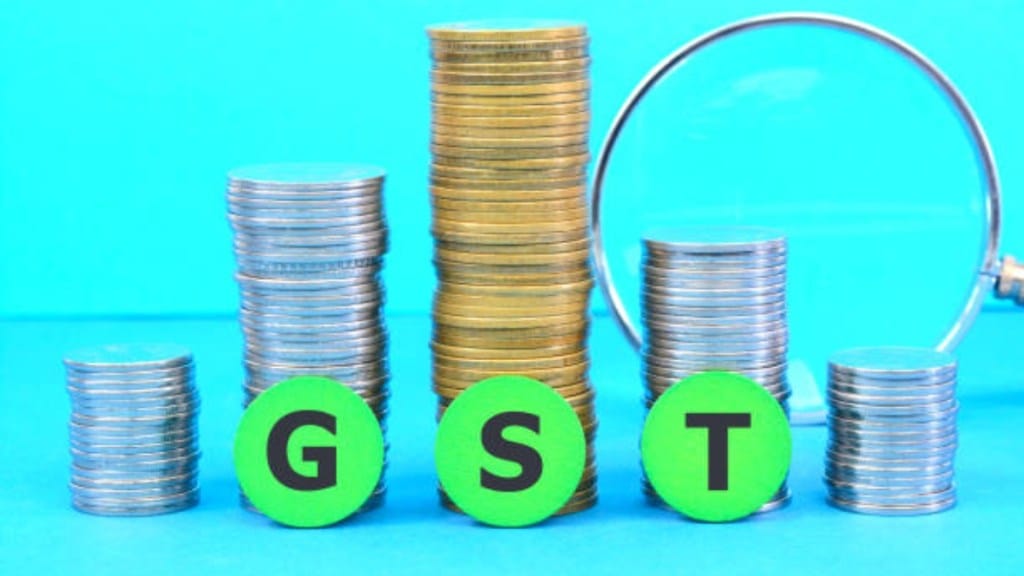By Vinay K Srivastava
India’s new indirect tax regime, goods and services tax (GST), has been in place for over seven years. While major initial challenges have been addressed, the long-standing issue of rate rationalisation remains persistent and requires attention. The issue gathered steam when Nitin Gadkari wrote a letter to finance minister Nirmala Sitharaman advocating reducing the 18% GST on health and life insurance premiums.
In the wake of this, the GST Council has constituted a 13-member Group of Ministers (GoM) to review the current tax rate of GST on health and life insurance premiums along with rationalising the multiple rates after an in-depth discussion in the 54th meeting of the GST Council. The panel will submit its report outlining new rates to ease the financial burden on policyholders.
Earlier, a GoM was formed to discuss GST rate rationalisation, which was reconstituted twice. It was first formed in September 2021 under the leadership of then Karnataka chief minister Basavaraj S Bommai. This group was entrusted with the important task of simplifying the tax rate structure by suggesting necessary rate rationalisation with a view to increase GST revenue.
The group submitted an interim report in June 2022, proposing changes in the tax rate for select goods and services.
The group was reconstituted for the first time in November 2023 after Bommai lost the state assembly elections and Uttar Pradesh finance minister (FM) Suresh Khanna was named the new convener. The panel was reconstituted a second time this June and Bihar FM Samrat Choudhary was appointed the next convenor.
As the group is expected to submit its final report, recommending changes in tax rates and slabs, it met on August 22 and September 25 to review GST rates for over 100 items but failed to reach consensus. Two ministerial panels were convened on October 19 to discuss the issue.
The group on rate rationalisation discussed proposals to reduce GST rates on essential goods and services, and increase rates on luxury and sin goods.
GST on term and health insurance premiums for senior citizens may soon be a thing of the past as the second panel has suggested exempting it from GST. This proposed rate adjustment is likely to generate a revenue surplus of `22,000 crore, which can offset the potential loss due to the exemption and enhance GST collections. However, the proposal will not reduce the slabs, which is desperately needed today.
The Centre is planning to streamline the current rates into three tiers. However, this looks challenging given the political scenario as assembly elections in Maharashtra and Jharkhand are just around the corner. However, the Central Board of Indirect Taxes and Customs is reevaluating the GST structure by merging the 12% and 18% slabs and consolidating these rates into 14%, 15%, or 16%.
Notably, GST was rolled out in 2017 to consolidate multiple indirect taxes into a single unified levy to boost revenues of the government. However, the new tax system diverges from its predecessor in its rate structure. Earlier we had a three-tier central value added tax (Cenvat) rate and a single service tax rate.
The new tax regime consists of five primary rates — 0%, 5%, 12%, 18%, and 28% — depending on the category of goods and services, two special rates applicable to specific items, 0.25% for rough diamonds and precious stones, and 3% for gold and silver. An additional 1-15% cess is levied on demerit and luxury goods falling under the 28% tax bracket, creating multiple GST rate structures.
Unlike most countries, where single or dual rate structures are prevalent, India stands out for its complexity, which places it in a small group of countries including Ghana, Italy, Luxembourg, and Pakistan. The World Bank reported that the spread of tax rates increases complexity, resulting in greater compliance costs for businesses.
Another major reason for rate rationalisation is the loss of revenue to the government as the revenue-neutral rate (RNR) has been compromised due to several changes in tax slabs. The current RNR of 12.2% is lower than the RNR of 15-15.5%. The RNR should be at least 17% so that revenue loss can be avoided.
Although many issues related to GST have been resolved by now, multiple tax rates remain a matter of concern. Apart from this, another persistent demand is to include petroleum products in the ambit of GST, which needs attention. The inclusion of petroleum products is still a matter of debate as the Centre as well as most states are not unanimous, but the persistent demand for a simplified and more sensible GST rate structure cannot be ignored.
It will not be easy to rationalise as many states including Punjab, Bihar, West Bengal, Karnataka, and Himachal Pradesh are opposing the GST rate cut citing financial concerns. States fear that changing GST rates on semi-essential items may lead to revenue loss and increasing taxes on essential goods, which are taxed at 5%, would burden the common man. Despite these issues, the rates should be more effective and transparent.
The Select Committee of Rajya Sabha headed by Bhupendra Yadav had also advocated lower tax slab. As a base, we already had a three-tier rate structure in the Cenvat regime. Therefore, to reduce compliance costs and promote fair competition, the new tax regime should have a three-tier tax structure — a merit, a demerit, and a central rate.
The author teaches finance at Institute of Technology and Science, Ghaziabad.
Disclaimer: Views expressed are personal and do not reflect the official position or policy of FinancialExpress.com. Reproducing this content without permission is prohibited.
